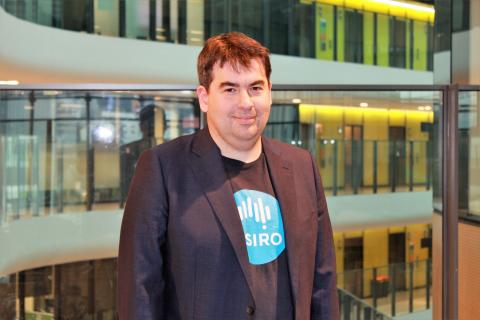
Dr David Ireland is a research scientist at CSIRO’s Australian E-Health Research Centre, specialising in software development for mobile and server applications, natural language processing, artificial intelligence, signal processing, and human-computer interaction – to name a few.
Dr Ireland has been engaged by Melbourne Genomics to develop a chatbot that could interact with patients seeking testing for additional genomic findings.
We asked him a few questions about chatbots and the development of ‘Edna’.
So, what’s a chatbot?
Known formally as a ‘conversation agent’, a chatbot is a program designed to interact with the user via natural language. This could be using voice, or text (much like Apple's Siri or Amazon’s Alexa).
Tell us about the chatbot project for Melbourne Genomics. What is it, exactly?
We are building a ‘trainee’ chatbot, called Edna, to provide user-specific information regarding additional findings, and about genomic testing more generally. Edna will act as a guide to the patient, prior to their appointment with a genetic counsellor.
We are seeking to determine whether providing and collecting basic information before a genetic counselling session can make the session more productive for both the patient and the counsellor.
Edna confirms consent for the conversation, then explains the nature of the testing and implications the patient will need to consider, including potential impacts on insurance and mental health.
Edna then conducts a preliminary family history, asking about family members.
Lastly, we have programmed a huge amount of information related to genetic conditions and terminology, as resources which can enhance patients’ medical literacy.
How did this project come about?
I have been exploring chatbot projects for applications in health for the past several years, particularly in relation to dementia, autism and Parkinson’s disease. From my recollection, I was participating in a radio interview about my work with chatbots for autism therapy and Melbourne Genomics contacted me following that. CSIRO is a Melbourne Genomics member organisation, so we put together this joint project.
Why use a chatbot?
Chatbots are cheap, mass deployable, and able to be accessed by potential customers in the comfort of their own home. They are interactive and less intimidating than a large book. Unlike a book, chatbots can be reprogrammed to include the latest up-to-date information.
Why use a chatbot to interact on additional genomic findings?
Additional genomic findings can have serious implications that need to be discussed. A chatbot could provide a convenient and programmable tool for exchanging information that increases the productivity when the patient meets their genetic counsellor in person.
How do you think people will respond to interacting with a chatbot?
I think people will enjoy it and find it useful - unless Edna makes a mistake. So, we are putting in a lot of effort to make sure Edna is a smart as possible!
What is unique about this project?
It's using the latest technology in speech recognition and language parsing. To our knowledge, there are no other chatbots like Edna.
Chatbots have existed since at least the 1960s, but only recently have they matured to be of use commercially, or in this case, clinically. Taking the first step into an unknown technology requires a degree of leadership.
How will the project help Melbourne Genomics?
We suspect that over time it will provide a new tool to engage with potential patients, enhance their knowledge and contribute to informed decision-making for genomic testing.
